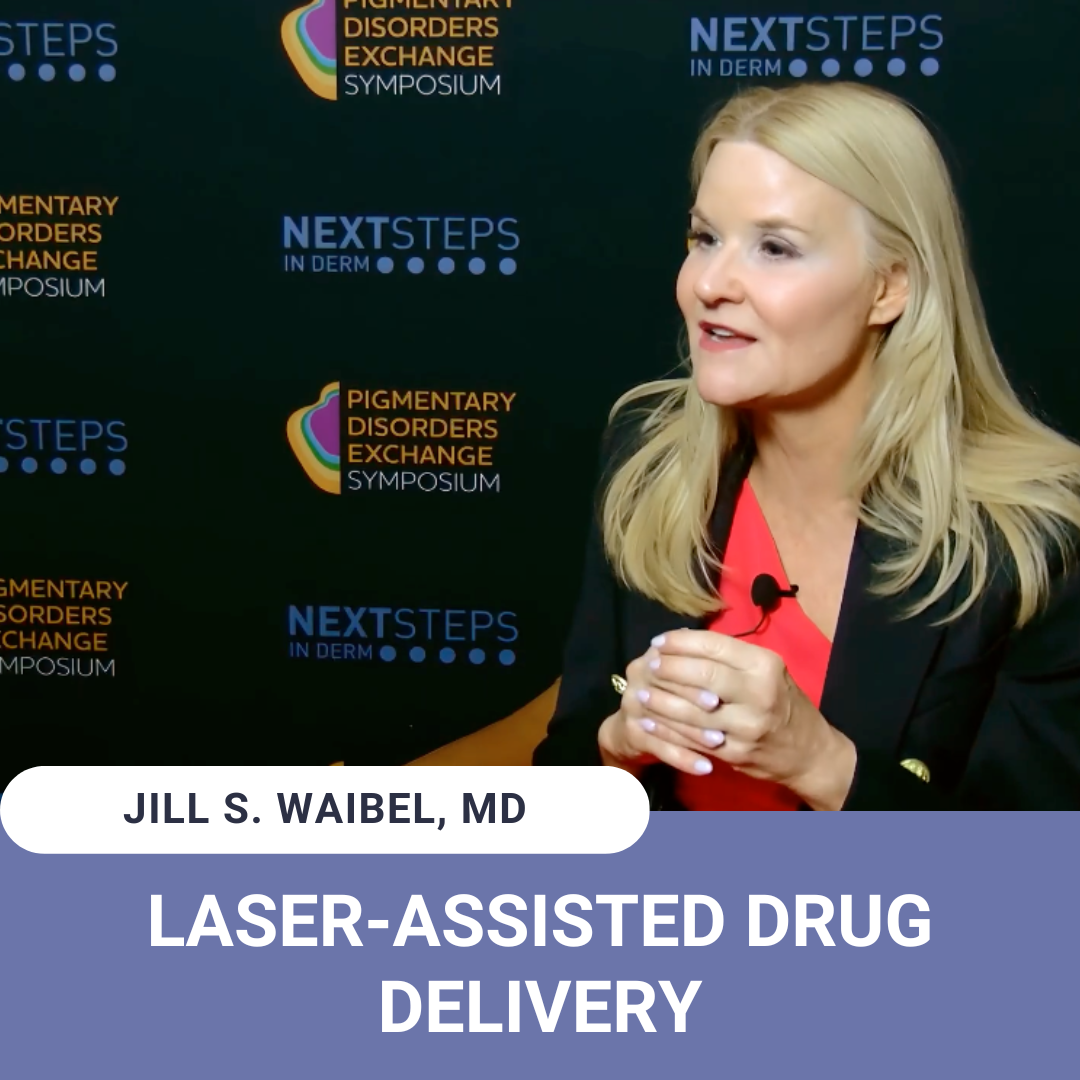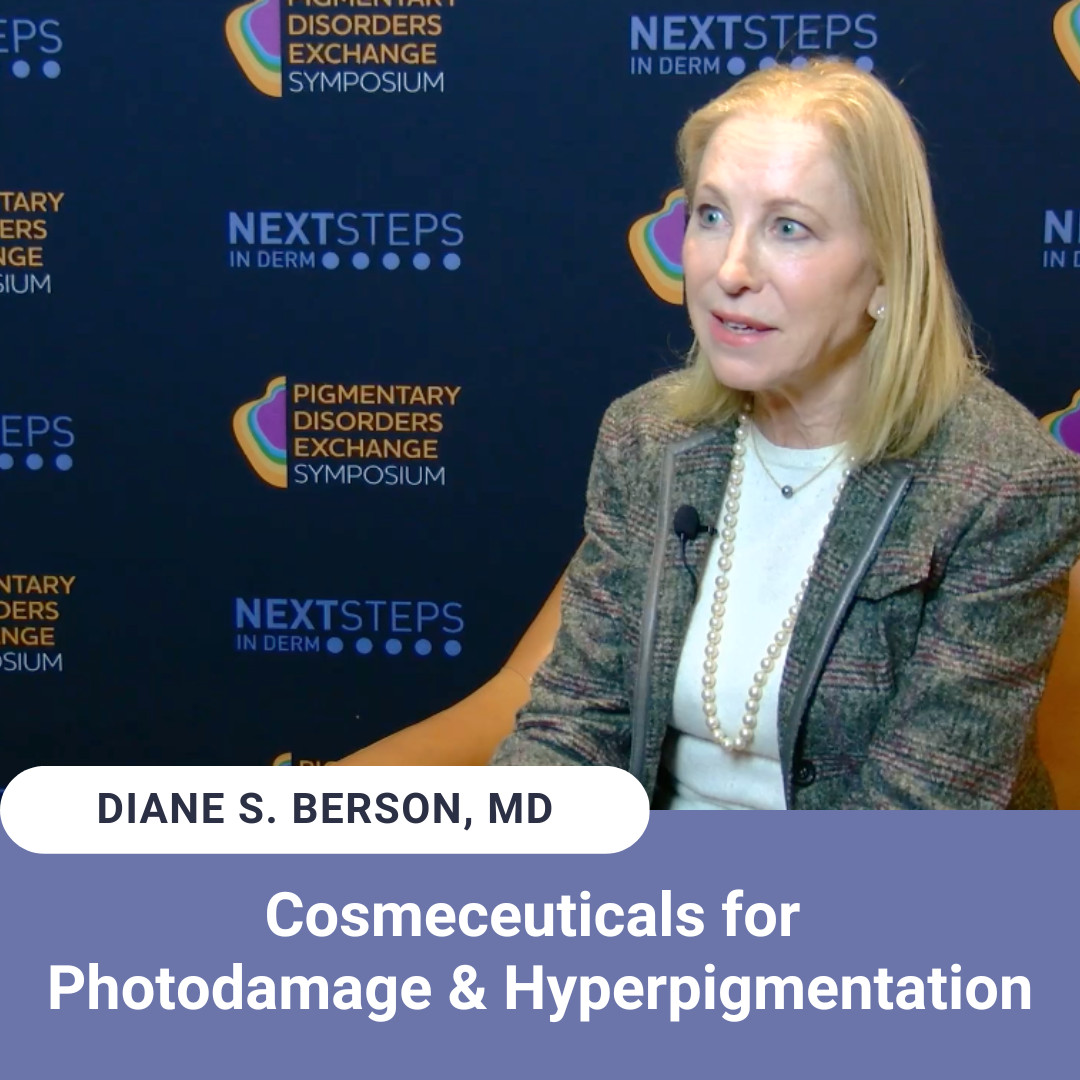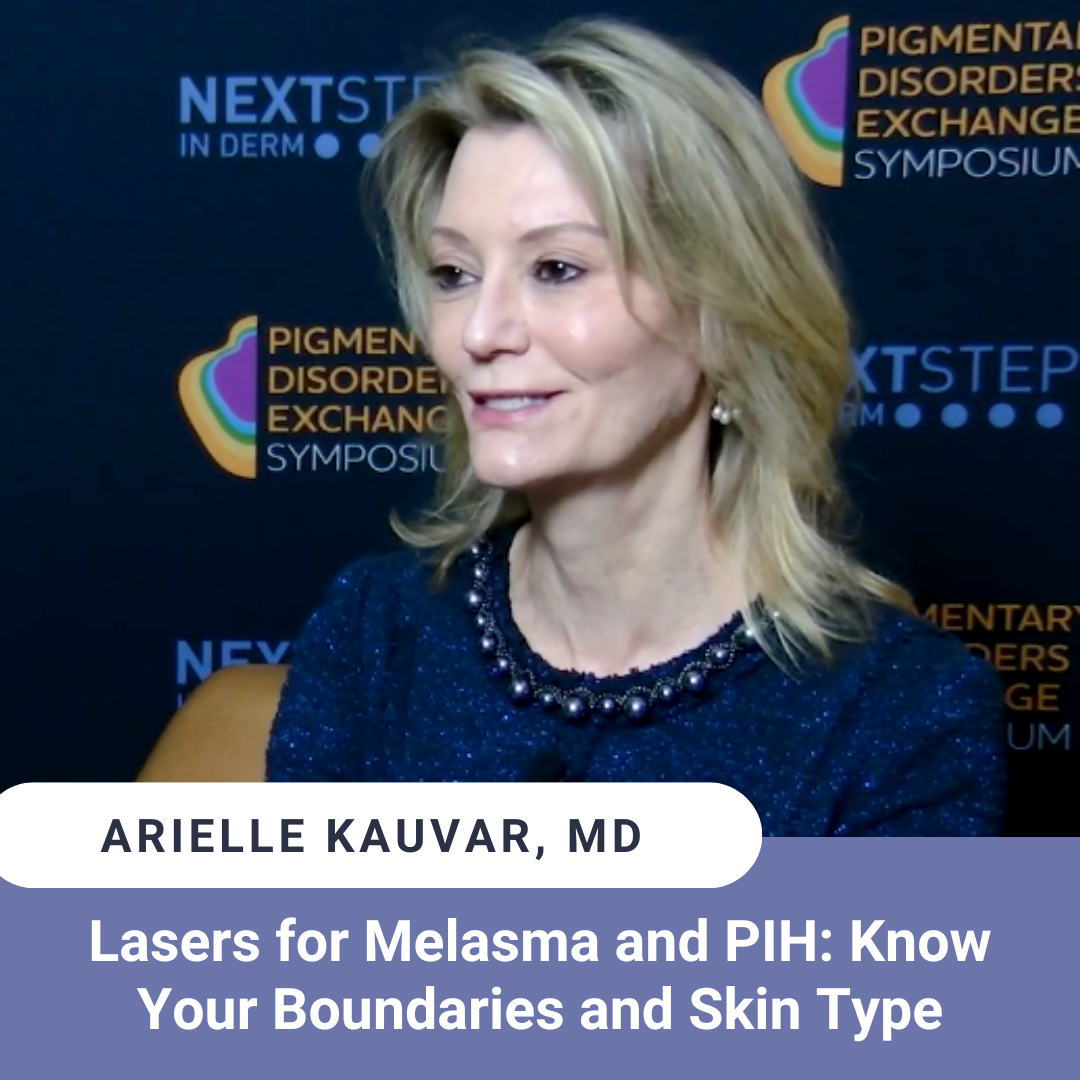Laser-Assisted Drug Delivery
 Next Steps in Derm, in partnership with Pigmentary Disorders Exchange Symposium interviewed Dr. Jill S. Waibel, subsection chief of dermatology at Baptist Hospital of Miami, medical director of the Miami Cancer Institute’s Multispecialty Skin Cancer Clinic, and assistant voluntary professor at the University of Miami Miller School of Medicine. Learn about the emerging field of laser-assisted dru …
Next Steps in Derm, in partnership with Pigmentary Disorders Exchange Symposium interviewed Dr. Jill S. Waibel, subsection chief of dermatology at Baptist Hospital of Miami, medical director of the Miami Cancer Institute’s Multispecialty Skin Cancer Clinic, and assistant voluntary professor at the University of Miami Miller School of Medicine. Learn about the emerging field of laser-assisted dru …
 Next Steps in Derm, in partnership with Pigmentary Disorders Exchange Symposium interviewed Dr. Jill S. Waibel, subsection chief of dermatology at Baptist Hospital of Miami, medical director of the Miami Cancer Institute’s Multispecialty Skin Cancer Clinic, and assistant voluntary professor at the University of Miami Miller School of Medicine. Learn about the emerging field of laser-assisted dru …
Next Steps in Derm, in partnership with Pigmentary Disorders Exchange Symposium interviewed Dr. Jill S. Waibel, subsection chief of dermatology at Baptist Hospital of Miami, medical director of the Miami Cancer Institute’s Multispecialty Skin Cancer Clinic, and assistant voluntary professor at the University of Miami Miller School of Medicine. Learn about the emerging field of laser-assisted dru … 

 Next Steps in Derm, in partnership with Pigmentary Disorders Exchange Symposium, interviewed Dr. Iltefat Hamzavi, a dermatologist with Henry Ford Health and associate professor of dermatology at Wayne State University School of Medicine. Learn from Dr. Hamzavi the key pillars of vitiligo treatment, and why there’s room to improve available options for melanocyte recruitment and repair. Dr. Hamza …
Next Steps in Derm, in partnership with Pigmentary Disorders Exchange Symposium, interviewed Dr. Iltefat Hamzavi, a dermatologist with Henry Ford Health and associate professor of dermatology at Wayne State University School of Medicine. Learn from Dr. Hamzavi the key pillars of vitiligo treatment, and why there’s room to improve available options for melanocyte recruitment and repair. Dr. Hamza …  Next Steps in Derm, in partnership with Pigmentary Disorders Exchange Symposium interviewed Dr. Diane S. Berson, associate professor of dermatology at Weill Cornell Medical College. Watch as Dr. Berson shares the cosmeceutical ingredients that dermatology clinicians can use synergistically to address photodamage and hyperpigmentation. Learn what ingredients are newly available and how cosmeceutica …
Next Steps in Derm, in partnership with Pigmentary Disorders Exchange Symposium interviewed Dr. Diane S. Berson, associate professor of dermatology at Weill Cornell Medical College. Watch as Dr. Berson shares the cosmeceutical ingredients that dermatology clinicians can use synergistically to address photodamage and hyperpigmentation. Learn what ingredients are newly available and how cosmeceutica …  Next Steps in Derm, in partnership with Pigmentary Disorders Exchange Symposium interviewed Dr. Amit Pandya, staff dermatologist with Palo Alto Foundation Medical Group and adjunct professor in the department of dermatology at the University of Texas Southwestern Medical Center. Dr. Pandya says this is the most exciting time for him as a dermatologist with new vitiligo medications on the market an …
Next Steps in Derm, in partnership with Pigmentary Disorders Exchange Symposium interviewed Dr. Amit Pandya, staff dermatologist with Palo Alto Foundation Medical Group and adjunct professor in the department of dermatology at the University of Texas Southwestern Medical Center. Dr. Pandya says this is the most exciting time for him as a dermatologist with new vitiligo medications on the market an …  Next Steps in Derm, in partnership with Pigmentary Disorders Exchange (PDE) Symposium interviewed Dr. Arielle Kauvar, clinical professor of dermatology at NYU Grossman School of Medicine. Learn the unique role lasers can play in treating melasma and post-inflammatory hyperpigmentation, especially when patients don’t respond to conventional therapy. Hear from the expert on what lasers to use when …
Next Steps in Derm, in partnership with Pigmentary Disorders Exchange (PDE) Symposium interviewed Dr. Arielle Kauvar, clinical professor of dermatology at NYU Grossman School of Medicine. Learn the unique role lasers can play in treating melasma and post-inflammatory hyperpigmentation, especially when patients don’t respond to conventional therapy. Hear from the expert on what lasers to use when …